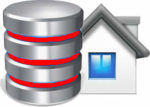Recipes for Rapid Web Development with Ruby
With applications that are code-light, feature-full, and built to
scale quickly, Rails has revolutionized web development. Not only has it been
adopted with impressive speed and enthusiasm, but the vitality of the Rails user
community also promises that Rails adoption will continue at an accelerated pace
as the framework matures. For web developers looking to be productive with Rails
quickly, the new Rails Cookbook (O’Reilly) by Rob Orsini, provides recipes that
address the everyday, real-world challenges they’ll face on the path to
proficiency.
In preparation for writing the book, Orsini explains that he researched the
question of what the Rails community needed most in a cookbook: “I collected
data from the Rails mailing lists as well as from the most active IRC channels,”
he recalls. “I wasn’t very scientific about how I processed the data, but I did
get a feel for what were many of the most commonly asked questions.” Based on
this, Orsini created the initial outline of the book and ran it past as many
Rails users as he could for feedback.
“While I hope that the book has something to offer Rails developers at all
experience levels,” says Orsini, “I think it will best serve those with web
development experience, but who are new to Rails. That said, the book includes a
wide variety of topics ranging from basic to advanced.”
Each recipe in the Rails Cookbook includes a solution to a problem, with a
discussion of how and why it works, so developers can adapt the techniques to
their specific situations. “Rails has been a fast-moving target,” says Orsini.
“I took care to make sure the book covers the new features of Rails 1.2 within
the body of recipes. To make the transition to Rails 1.2 easier, the book
includes an appendix detailing the changes from the previous stable version of
Rails (1.1.6).”
Rails Cookbook is also available in PDF beginning Feb. 5, 2007. Topics in the
book include:
. Modeling data with the ActiveRecord library
. Setting up views with ActionView and RHTML templates
. Building an application’s logic into ActionController
. Testing and debugging a Rails application
. Building responsive web applications using JavaScript and Ajax
. Ensuring applications are secure and perform well
. Deploying applications with Mongrel and Apache
. Using Capistrano to automate deployment
“Rails developers have their work cut out for them in terns of staying on top of
the ever-changing set of technologies that make up Rails development,” notes
Orsini. “I think this book includes a lot of the investigative legwork, in a
nicely organized and indexed format. While the blogosphere has an amazing wealth
of information on Rails, it still takes time to go through and verify. This book
has done much of that work and more, so developers don’t have to.”
